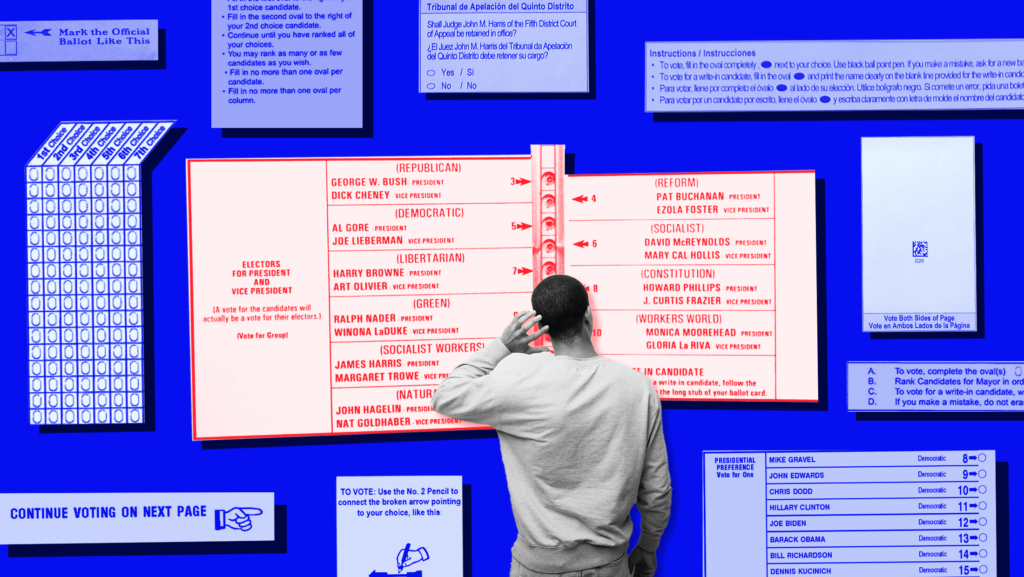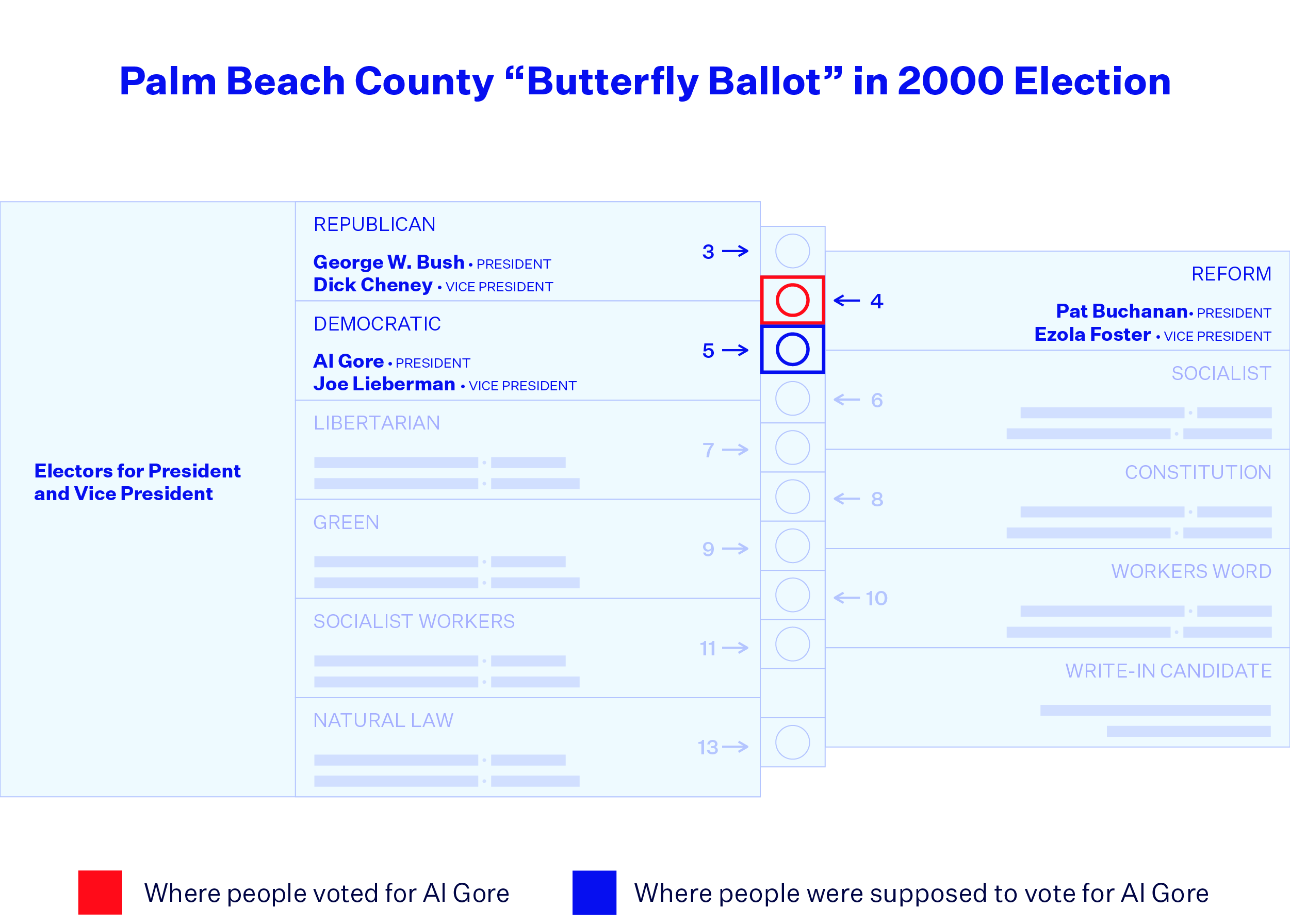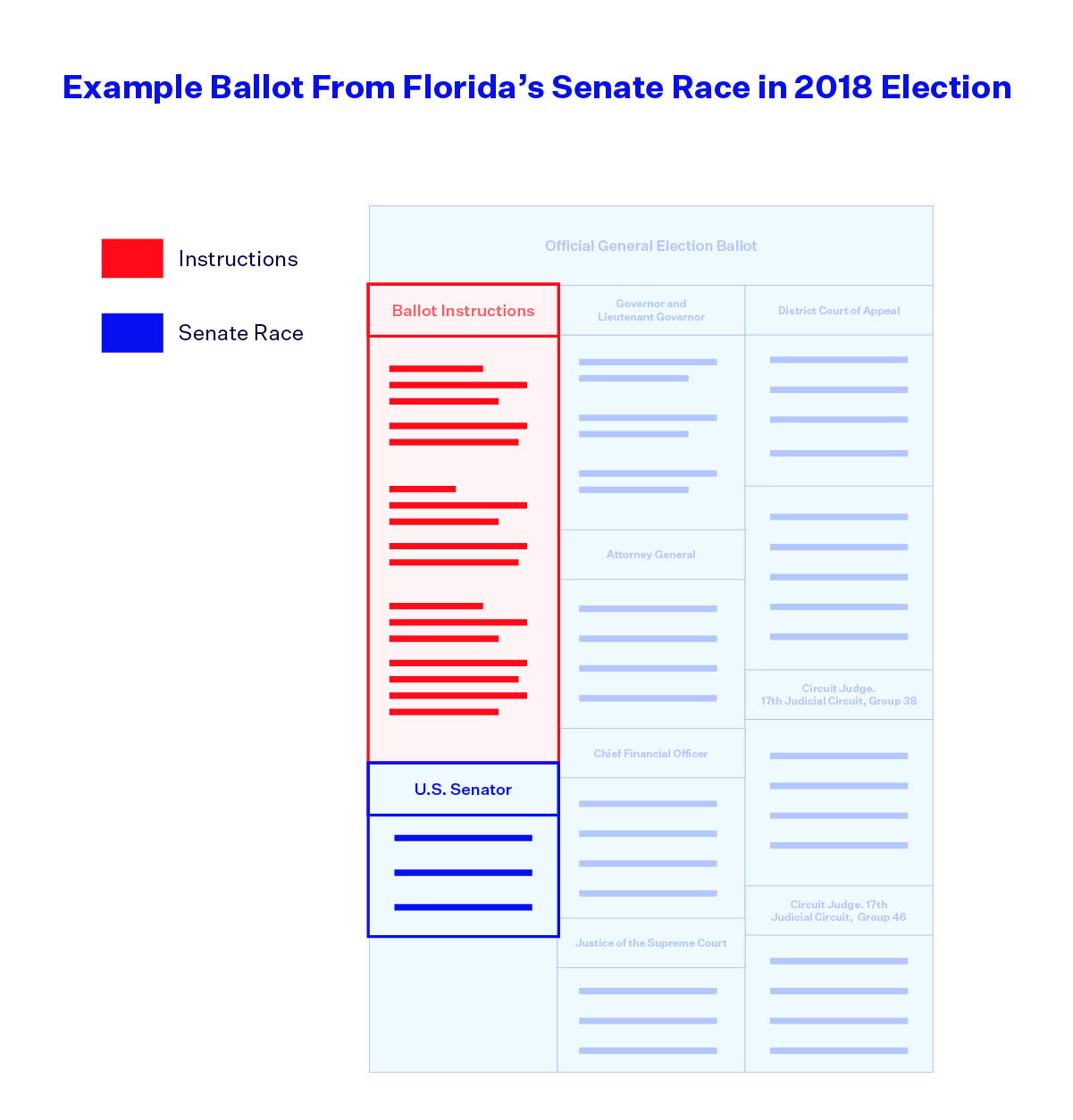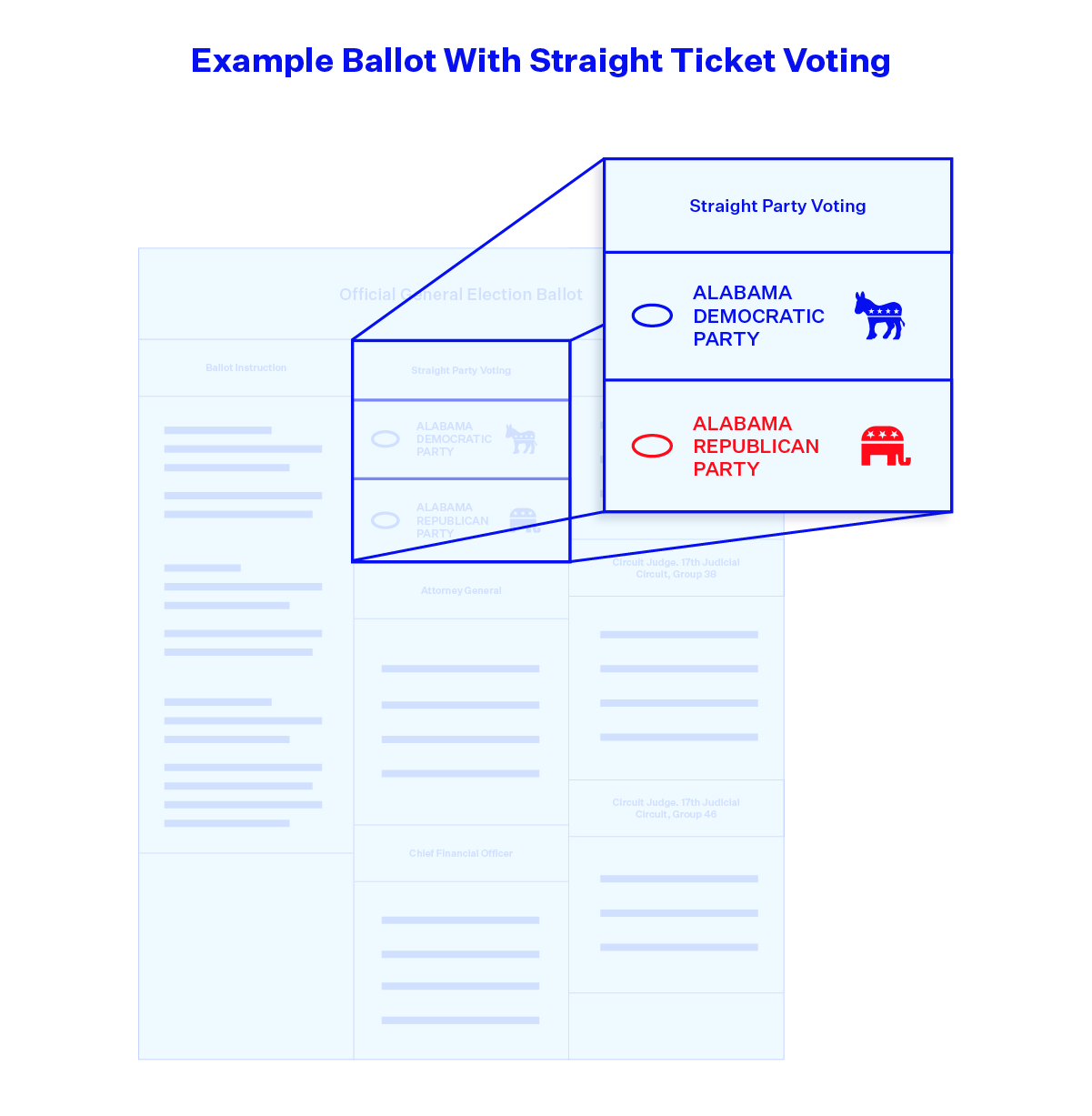How Ballot Design Impacts Election Results

It was a mere 537 votes that put former President George W. Bush ahead of Al Gore in the 2000 presidential election. Soon after, all eyes were on Palm Beach County, Florida where punch card machines, “hanging chads” and infamously poor ballot design may have cost Gore the presidency.
To fit all 10 presidential candidates and their running mates on the ballot, Palm Beach County officials decided to spread the names across two pages, in what’s known as a “butterfly ballot.” In the center of the ballot was the punch card where voters indicated their choice, directed by small arrows. A subsequent study concluded that over 2,000 Democratic voters mistakenly voted for Pat Buchanan, a third-party far right candidate, because of the confusing design. That’s far more than the 537 votes that gave Florida’s electoral votes and the presidency to Bush.

Ballot design can have significant impacts on elections — on whether ballots are rejected, whether individuals undervote, overvote or who they vote for.
The dos and don’ts of ballot layout.
Nearly 20 years later, another Florida county had another notable ballot design blunder. In Broward County, a Democratic stronghold, there was a mysterious and substantial undervote in the Senate race. This meant that voters cast a vote in the governor’s contest and other races but not in the Senate contest.
All signs point to bad ballot design — the Senate race was placed in the same column as, and directly below, a long list of instructions that included translations into Spanish and Haitian Creole. Confident, experienced voters who don’t feel the need to closely read instructions or those with lower-literacy skills tend to skim or skip this section, and consequently, the Senate race below it. The undervote in Broward County is estimated to have cost Democrat Bill Nelson 9,658 votes in the Senate election that Sen. Rick Scott (R) won by only 10,033.

Seemingly insignificant choices — like placing a race in the same column as instructions — can have consequential effects. The Center for Civic Design has released a best practices guide that includes suggestions ranging from font style and sizing to ballot navigation and icons. The Brennan Center for Justice recommends keeping all candidates in the same race on the same page and in the same column, placing only one question per screen on electronic voting machines, avoiding unfamiliar terms and jargon, clearly indicating signature lines and more.
Maine, Alaska, New York City and a slew of smaller jurisdictions use ranked-choice voting; this system poses its own set of ballot design challenges, with San Francisco recently switching from a column layout to a grid layout.
Ballot order matters. If a candidate is listed first on the ballot, they get a boost.
In a phenomenon well-established by political science research, candidates listed first on a ballot often earn an electoral advantage. A study of Texas primary elections confirmed that ballot order has a significant impact. In high-profile races (ex: governor, U.S. Senate) or where candidates had name recognition, the ballot order effect was only one or two percentage points. In contrast, the impact jumped up to 10 percentage points in lower profile, low information elections (ex: state judiciary).
With this effect in mind, ballot order laws vary from state to state, and include some of the following:
- Alphabetical order by last name, starting with the major parties (Hawaii, Maine, Nevada, North Carolina and Vermont);
- Order determined through a lottery system by county clerks (New Jersey), the state board of elections (Virginia) or the secretary of state (New Mexico and South Dakota);
- Order determined by the most votes in the last election for Congress (Wyoming), president (Washington), or governor.
Georgia, Florida and Texas are among the states that require the candidates of the same political party as the current governor to be listed first on the ballot in all races (for Texas, primaries are randomized, but the general election follows this rule). In all three states, the Republican party has controlled the governorship for over or close to two decades. Georgia, Florida and Texas were all sued over these statutes prior to the 2020 election, based on the argument that the law treats similarly situated candidates differently without sufficient justification and violates the First and 14th Amendments.
In Arizona, where the law is slightly different, the 9th U.S. Circuit Court of Appeals recently sent a ballot order case back to the district court to rule on the merits.
States are doing away with the one-stop vote for candidates of the same political party.
Straight ticket voting, also known as straight party voting, allows individuals to vote for the entire slate of one party’s candidates with a single mark. Currently, seven states offer straight ticket voting: Alabama, Indiana, Kentucky, Michigan, Nevada, Oklahoma and South Carolina.

In the past two decades, there has been a trend away from this option, with the notable exception of Nevada. Since 2017, Iowa, Pennsylvania, Texas and Utah have eliminated straight ticket voting.
Two-thirds of Texas voters had utilized this option in the 2018 election. And, in a state dominated by Republican lawmakers, a popular, top-of-the-ballot candidate (think Beto O’Rourke in 2018) gave all Democratic candidates a boost. Democratic groups were also concerned that the repeal of straight ticket voting would burden voters of color in big cities, creating longer lines and leading to voter drop-off — where voters don’t fully complete their ballots. The Texas law eliminating straight ticket voting was challenged, but the case was eventually dismissed.
Bad ballot design doesn’t just confuse voters, it sways elections. Now, there’s an emphasis on avoiding past mistakes with many states creating user-friendly and common sense ballots that guide people in the voting booth. California has even implemented a Ballot Design Advisory Committee for this purpose.
Ballot design makes a difference. It guides us, primes us and, in the case of close elections, can ultimately change the final outcome.